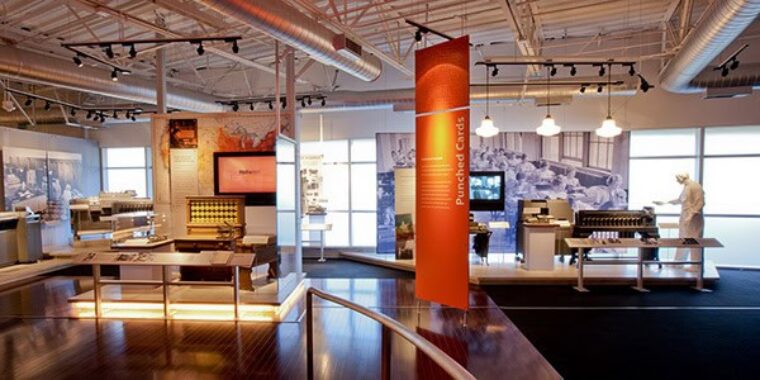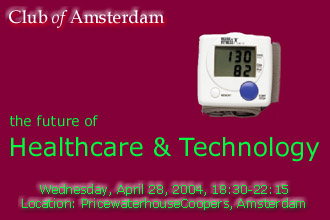
Q&A with Graham Smith

Graham Smith, Chief Scientist, Telbotics Inc., Canada
Club of Amsterdam: One of your views is that technology for some time now is made by technicians and scientists, not by artists. Somewhere on the line we lost what Leonardo da Vinci combined in one person. What is it then we are constantly missing and why is it important?
Graham Smith: I think that it is more a question of optics as both artists and scientists seek to answer questions about how and why the world exists. Science seeks to define the world, art seeks to express. Scientists take an approach that is based on engineering and artists take one based on philosophy yet both ask the same general question and use technology to express their ideas. What we are constantly missing by not encouraging co-operation between the 2 is the fact that both science and art use creativity to define new questions, explain results and express ideas. If the level of co-operation between the 2 can be increased it will help expand their respective fields in new and more innovative directions.
Looking at your artistic work, your Pebbles robot – that enables a diseased child to have a real-time presence in and communicate with its classroom – is suddenly a striking functional device. How do you feel about Pebbles: a nice side-effect, or an important application?
Graham Smith: PEBBLES is an important application as it demonstrates that healing the mind is critical in healing the body – the 2 are linked. We have performed dozens of clinical studies in Canada, the US and The Netherlands on the effects of PEBBLES and the results are amazing as it helps the students in ways I never imagined. A few examples- students do better academically when using PEBBLES compared to the same student back in class, there is no fear of returning to school due to the feeling that “they never left the class”, parents taking care of children recovering at home feel they can relax as their “child is at school”. The most surprising result has been that the sick students take on the role of educator and teach their classmates about the reality of being ill, this has created a unique reversal as the remote student becomes empowered rather than isolated. I knew the technology was revolutionary the moment I watched a sick student at home play a board game with friends at school using the hand on PEBBLES to role the dice. The mind plays an important role in healing and until this is better understood and dealt with our health care systems will continue to be crippled.
In the 5-10 year future, how do you feel could and/or should technology help citizens and patients in staying healthy and managing their own diseases?
Graham Smith: In the next 5-10 years you will see technological ideas like PEBBLES become more mainstream as the cost of entry drops and more research studies are completed. By keeping long term patients connected to their social network (students back to their class in school, people to family) we have shown that patient stress levels drop dramatically. This reduction in stress is a key to lowering health care costs in the future as depressed, isolated people heal at a reduced rate compared to socially connected ones. The real challenge is convincing the health care industry of this fact as they still look at it as an infrastructure issue and not a social one. The problem is changing the minds of the people running these organizations as it does not fit into the current paradigm of a healing technology and thus will take time to change.
Graham Smith speaks at our Club of Amsterdam Event about
‘the future of Healthcare & Technology’ on Wednesday, April 28, 18:30-22:15!
about the future of Healthcare

Captain Picard’s “com badges” ready for hospitals
For many healthcare institutions, wireless LANS have become a key component of the IT infrastructure. Instant communication-anytime and anywhere-between mobile and dispersed hospital staff is critical to improved quality of patient care.
Vocera Communications System is a wireless platform that provides hands-free, voice-controlled communications throughout any 802.11b networked building or campus. The Vocera Communications Badge is a wearable “com badge”.

Visible Human Server
The Visible Human Server at the EPFL (Ecole Polytechnique Fédérale de Lausanne) offers a virtual anatomic construction kit on the web using the Visible Human dataset. The applets available on this site provide the following features:
a) Extract slices, curved surfaces, and slice animations from both datasets (male and female)
b) Interactively navigate by slicing through the male dataset in real-time
c) Construct 3D anatomical scenes using combinations of slices and 3D models of internal structures from the male dataset, and extract 3D animations
d) Add voice comments to video sequences generated using the applets
The 3D datasets originate from two bodies that were given to science, frozen and digitized into 1 mm horizontally spaced slices (0.33 mm for the female body) by the University of Colorado (Dr. Victor Spitzer) under contract of the National Library of Medicine, Bethesda, Maryland.
News about the future
Sony, Toppan Printing develop paper optical disk
Sony Corp and Toppan Printing Co. have developed an optical disk made primarily from paper and capable of storing large volumes of high-definition images.
The 25-gigabyte disk is based on Blu-ray Disc technology, which Sony and other high-tech firms in Japan and abroad are promoting as the next-generation standard for optical disks. The disk is capable of recording more than two hours of high-definition images.
The paper disc is based on a version of a blue-laser DVD technology, called Blu-Ray, that is supported by a consortium of electronics makers including Sony, Matsushita Electric Industrial and Dutch firm Philips.
Engineers create search engine to retrieve results with an image
Purdue engineers developed a search engine that retrieves results based on a sketch. When users draw a hex nut, the program searches a database and retrieves all images that match the drawing.
Karthik Ramani, professor of mechanical engineering and director of the Purdue Research and Education Center for Information Systems, thinks everyday Internet users will perform image searches in 10 to 15 years. However, the project began to help manufacturers keep tabs on the plethora of components they’ve bought or designed.
“Just a single commercial airliner has more than a million unique parts,” he says. “Such a search method could save millions of dollars annually by making it unnecessary to design parts anew and enabling you to mine for other knowledge, such as past decisions regarding costs and design advice about the part.”
Designers spend about six weeks per year looking for information on parts, he said. The search engine seeks to cut that time by 80 percent.
To cut time, the group designed an easy-to-use interface.
Users can select an inventoried part or ask the system to find clusters of parts. Users can also sketch the part from memory or choose a part that looks similar from the company’s catalog and then sketch modifications.
Computer History Museum
Established in 1996, the Computer History Museum is a public benefit organization dedicated to the preservation and celebration of computing history. It is home to one of the largest collections of computing artifacts in the world, a collection comprising over 4,000 artifacts, 10,000 images, 4,000 linear feet of cataloged documentation and gigabytes of software.

Society of Rheology
The Society of Rheology is composed of physicists, chemists, biologists, engineers, and mathematicians interested in advancing and applying rheology, which is defined as the science of deformation and flow of matter.
Rheology, a branch of mechanics, is the study of those properties of materials which determine their response to mechanical force. The word rheology was coined in the 1920’s to represent the science of the deformation and flow of matter, and The Society of Rheology was officially formed on December 9, 1929.
Recommended Book

Knowledge Media in Healthcare: Opportunities and Challenges
by Rolf Grutter
Because the field of healthcare reflects forms of both explicit and tacit knowledge such as evidence-based knowledge, clinical guidelines and the physician’s experience, knowledge media have significant potential in this area. Knowledge Media and Healthcare: Opportunities and Challenges is an innovative new book that strives to show the positive impact that Knowledge Media and communication technology can have on human communication within the field of healthcare.
Supporter of the Club of Amsterdam event about ‘the future of Healthcare & Technology‘ on Wednesday, April 28, 2004 is:

Club of Amsterdam Experts Group: Jan Thie

Jan Thie Physician, specialised in public health.
The Hague, we have a problem…..
We are facing an aging population, shortage of qualified staff and costs of healthcare that is rocketing sky-high. By now we have seen that the traditional solutions are far from enough. It is time to rethink healthcare in a way we will be able to meet patients’ expectations in the future. Technology, especially Information and Communication Technology does offer tremendous possibilities to support the changes needed. In The Netherlands it was only some 15 years ago that telemedicine was regarded as an interesting feature for solving healthcare delivery problems in vast rural areas like in Australia or supporting healthcare delivery offshore, aboard planes and during military actions. So not for us. Today we now much better. Many successful pilots demonstrate the possible contribution of ICT to quality of care, to access of care, to efficiency of care, to self management, to name a few.
Despite these successes there still is a huge gap between pilots and implementation in every day healthcare practice. It is not happening yet. Legislation, regulation- and reimbursement issues seem not to be the main hurdles. Though innovations could be made easier and more attractive by easing the pressure on especially financial issues. The main reason lays in all those involved in healthcare delivery. A cultural change in the way we work together throughout the service will be needed. We have to redefine the roles of all involved, including the patient’s role.
ICT offers many possibilities but it is only going to happen when all involved want to make it a success. Here lays the real challenge.
The Hague and all involved in healthcare go for it…
Club of Amsterdam Upcoming Events
| April 28, 2004 | the future of Healthcare & Technology |
| May 19, 2004 | the future of Architecture |
| June 23, 2004 | the future of Culture & Religion |







Customer Reviews
Thanks for submitting your comment!